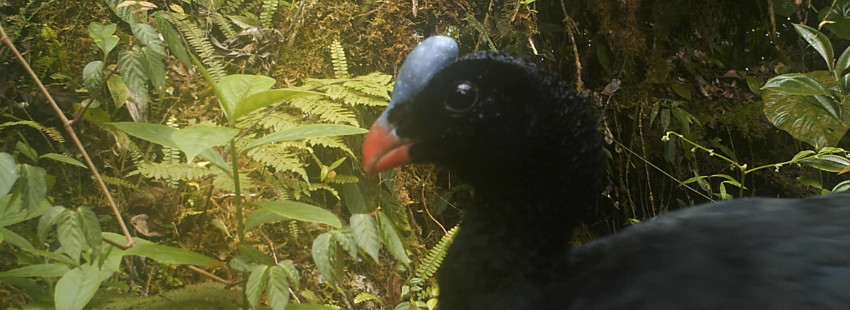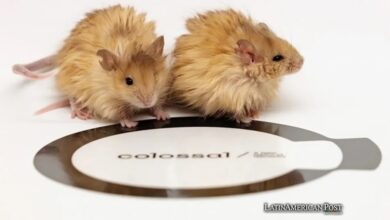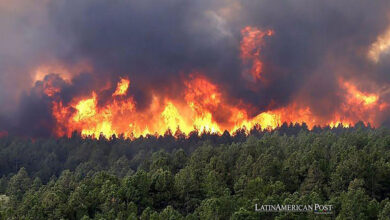Camera traps for studying endangered species


In 2015 a team of Peruvian and British researchers left 21 camera traps on Peru’s Sira Communal Reserve for six months. The expedition was a success as they were able to capture some of the first images of critically endangered Sira curassow to be made publicly available.
Before this, it had only been seen by researchers on a few occasions. Following their success, the team revisited the study location in 2016 and left HD cameras.
The Sira curassow (Pauxi koepckeae) is a large bird in the Cracidae family and its only known population resides within the Sira Communal reserve, a chain of isolated and high-elevation outcrops of the Peruvian Andes. They are listed as Critically Endangered by the IUCN Red List. The species is thought to have less than 400 adult individuals.
The latest images were released in a study published in the journal Endangered Species Research.They were impressed by the success of their second trap survey. “When we retrieved the footage and started going through the videos we couldn’t believe our eyes,” said Ruth Pillco-Huarcaya of Peru’s Universidad Nacional San Antonio and co-author of the study in a statement.
“We didn’t have one or two videos of the Sira curassow… we had 19 independent records!”
The authors believe it is important to use monitoring techniques to study endangered species so that they can best inform future management strategies. They said it is an effective tool for detecting the Sira curassow and makes it possible to perform a better assessment of the bird’s distribution and population size.
More so, the images can help develop awareness of the threatened species in the region. They hope the Sira Communal Research gains international recognition and encourages researchers and activists to improve its protected status.
Nonetheless the cameras also show the bird is facing several threats.
“Although we expected to find that the Sira Communal Reserve was an untouched remote wilderness, the reality was that it is in danger of being degraded from many directions,” said Dr. Andrew Whitworth of the University of Glasgow and study co-author in a statement.
“In just six weeks, we observed illegal logging, cocaine production, hunting, gold-mining, and large-scale conversion of its lowland areas IGNORE INTO grassland for cattle grazing. The future of the Sira curassow looks bleak.”
Still their project can lead the way to other conservation efforts and research in Latin America, especially in places with difficult access.
“Prior to conducting this research we were essentially guessing about the status of the Sira curassow from just a handful of records,” said in a statement Dr. Christopher Beirne of the University of Exeter, the study’s lead author.
“Now we have a tool which we can use to robustly determine the health of this population and identify threats to its future persistence. It is a huge step forward for the future conservation of this species.”
LatinAmerican Post | Maria Andrea Marquez




